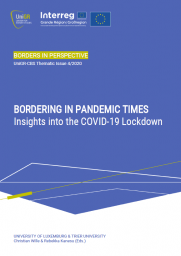Policy Paper Vol. 5
Depending on location, European border regions can look back on several decades of development in their histories of cooperation. For the Franco-German region this stretches back to the post-World War 2 reconciliation between the two countries, for the German-Polish borderlands to the raising of the Iron Curtain and the reunification of Germany in 1990. It is, however, easy to forget how fragile cross-border relations can still be: something the Covid pandemic, with its limping crisis management, brought powerfully home in the months of and after spring 2020. Poor cross-border communications and inadequate foresight as to their effects exacerbated the problems – old as well as new – caused by re-erecting long disused checkpoints and closing borders. In the present time of polycrisis it is more than ever important to review the Covid era and to analyze the nature and timescale of resilience in cross-border cooperation.
In a project based on empirical surveys and funded by the German-Polish Science Foundation, the four authors of the present policy paper outline a number of development perspectives for the Franco-German and German-Polish borderlands. Differentiating among resilience factors according to their capacity for resistance, adaptation, and transformation, practical recommendations are given for the enhancement of crisis management in both regions. The recommendations cover four areas:
- Communication between decision-makers must be improved and widened at all levels – vertical, horizontal, and diagonal – taking account of varying structures and responsibilities in the face of specific borderland challenges. Informal as well as formal communications are of central importance, not only in times of crisis but permanently. Suitable provision should also be made for cross-border residents.
- Of central importance is the growth of responsible cooperation on the basis of familiarity and trust, political will and mutual transparency. Borderland-specific measures can play a major role here, as does the reinforcement of intercultural competence.
- Key players and structures should be familiar to people across all levels of action: this can provide a basis for common cross-border growth. Suitable measures for improving knowledge transfer, disseminating good practice, and developing scenarios for response to future crises include the exchange of personnel and regular practice sessions. Apart from crises, such measures foster relations on an everyday level. All of this presumes the existence of adequate funding for border regions.
- The EU perspective on borderlands as ‘living laboratories of European integration’ requires that their potential for the development of the EU be taken seriously and vitally enacted. The opportunities offered by a Europe of open frontiers should be actively publicized – also as a means to anticipate and counter any feelings of cultural or national resentment.


